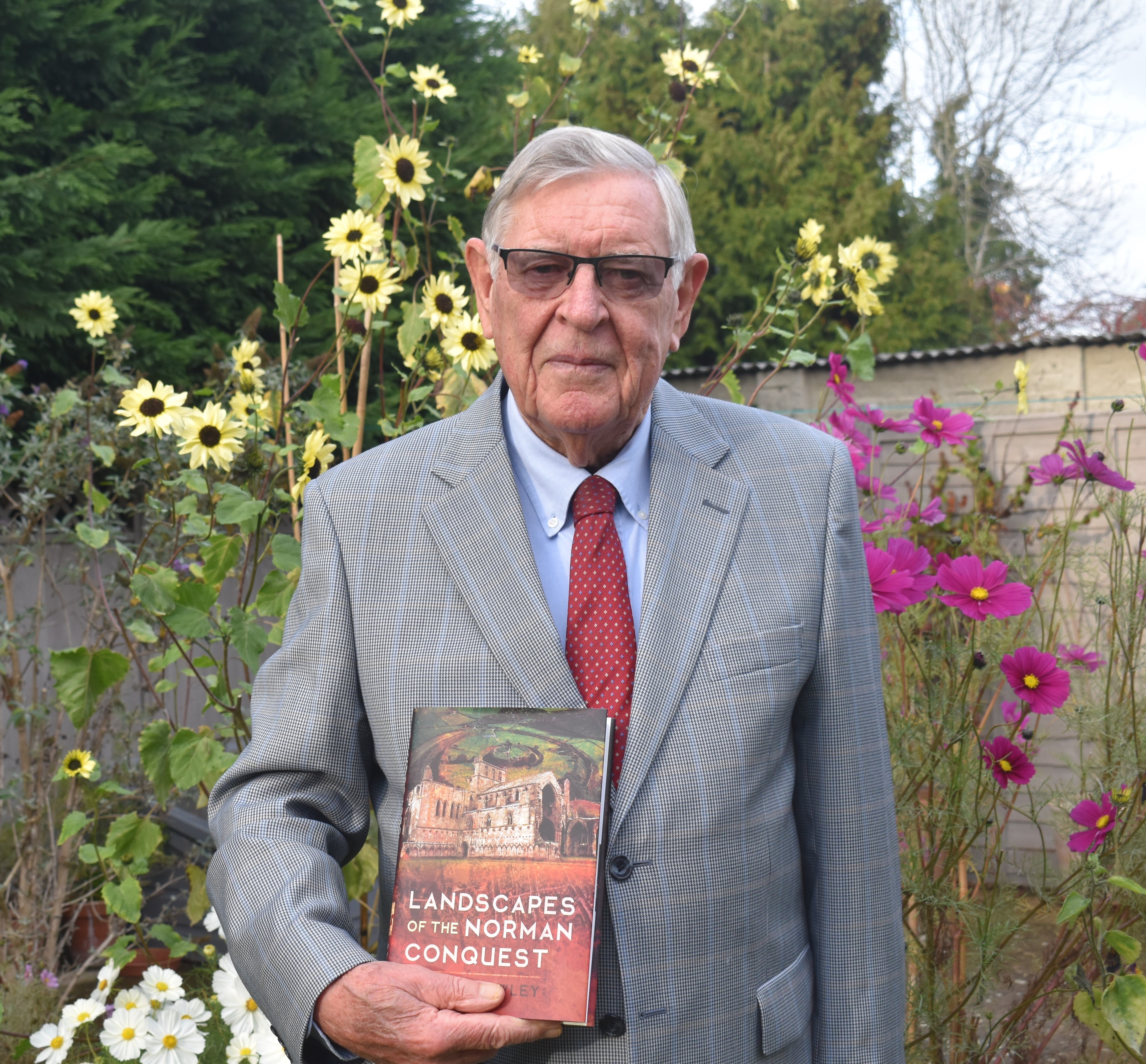Author Guest Post: Trevor Rowley
Landscapes of the Norman Conquest
The Norman Conquest led to a military, political and cultural takeover of England, which had major short and long-term consequences. Although the Battle of Hastings of 1066 is the best-known date in English history, much less is known about the events that followed the successful Norman invasion. The impact that the Norman Conquest had on the physical and cultural landscape of England and Wales is far less well understood. In the first instance William the Conqueror’s acquisition of the throne resulted in several revolts, which were harshly crushed, resulting in the devastation of large areas of northern and central England. The Domesday Book records how Yorkshire, for example, was still largely wasteland twenty years after the Battle of Hastings, following what is called the Harrying of the North. William’s great survey also shows how by 1086 95% of the land of England had been transferred from Anglo-Saxon landholders to French and other foreign barons and knights. The Norman Conquest brought about a complete transposition of the aristocracy in England as the old Anglo-Saxon nobility was dispossessed, representing the most thorough destruction of a ruling class in Europe until the Russian Bolshevik revolution of 1917. Similarly, the English church was transformed and within twenty years of the Conquest all the English archbishops, bishops, abbots, and priors had been replaced by foreigners. All the Anglo-Saxon cathedrals and abbeys were completely rebuilt in a new style of neo-classical architecture introduced from Continental Europe, which we call Norman or Romanesque. These new stone buildings were far larger than their predecessors and often dominated the settlements which they were associated, as at Durham or Tewkesbury. The rebuilding of England in the century after 1066 was on a scale unknown since the Roman occupation of Britain, which the Normans often sought to emulate. Material from the ruins of Roman buildings, known as spolia, was deliberately used in places such as St Albans, Colchester, and Canterbury to associate the Norman Conquest with the earlier imperial invasion.
In the longer term the coming of the Normans was to transform the shape and character of many towns and villages. Initially towns were important to the Normans as centres from which they could control the kingdom and all the major urban centres were soon furnished with castles. The building of castles in places such as Norwich and Lincoln, together with new cathedrals, destroyed large areas of former Saxon occupation and created the central town plans which survive until today. Elsewhere, castles dictated the shape of entirely new settlements at towns such as Ludlow and Bridgnorth in Shropshire, Devizes and Old Sarum (Old Salisbury) in Wiltshire, and Eye and Clare in Suffolk. On a smaller scale some villages were also distinctively fashioned around castles, as at Pleshey, Essex, or strongly influenced by them, as at Kilpeck and Weobley in Herefordshire.
In villages generally the Norman impact is not so obvious, although hundreds, if not thousands of parish churches and dozens of abbeys were built in the new Norman style. The role of the lord’s manor increased in importance and the manor house, often defended with a moat, became a central feature of most villages alongside the parish church, which was also under the lord’s control. Other features denoting seigneurial power, such as deer parks, fishponds, rabbit warrens and dovecotes became familiar features of the rural landscape by 1200. The Normans made one other monumental and lasting change to the English landscape in the form of Royal Forests. Forests consisted of large areas of land, up to one third of England at one stage, over which the crown claimed sole hunting rights, and where new Forest laws were rigorously enforced. It was the ultimate form of landscape privatisation. The preservation of woodland cover to protect the beasts of the chace was an important element of forest law. This established a culture of woodland maintenance which survived long after the Middle Ages, and gives the Normans the unlikely mantle of early conservationists.
How was the cultural landscape of England changed by the Norman Conquest? Initially the immediate impact was negative, many illuminated books, murals, tapestries, and much precious jewellery was stolen or destroyed. In the spring of 1967, William the Conqueror returned to France and undertook a processional victory tour around Normandy in the fashion of a Roman emperor, displaying some of the wealth from English churches which he had purloined. Eventually all aspects of life were affected by the imposition of a new French elite at the head of English society. The most noticeable impacts were on architecture, literature, law, and language. French replaced Anglo-Saxon as the language of the aristocracy and remained the courtly tongue for several centuries. About 25% of modern English is derived from the French language. Soon after 1066, literature, administration, religion, law, and much commerce were all conducted in French or Latin. Settlements and topographical features already had English or Scandinavian names when the Normans arrived, but afterwards French or Latin names were given to new towns, castles, estates, and monasteries, for example, Beaumont, Belvoir, and Richmond. Personal names soon took on a French complexion after 1066 and as early as 1100, Williams and Richards easily outnumbered Edgars and Aethelreds as popular boys’ names, in towns such as Winchester.
When Henry II became king in 1154 the Norman dynasty came to an end, but not Norman England. Although the Normans inherited and adapted much from the Anglo-Scandinavian society they had conquered; the English landscape of 1200 was very different from that of 1066. This would almost certainly would not have been the case if Duke William had not defeated King Harold at the Battle of Hastings on October 14th 1066. Landscapes of village, town, and countryside still bear the Norman hallmark; in the words of that great Anglo-Saxon scholar, Frank Stenton, ‘sooner or later every aspect of life was changed by the Norman Conquest’.

Landscapes of the Norman Conquest is available to order here.


